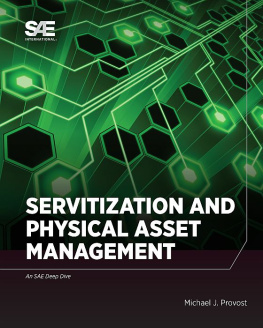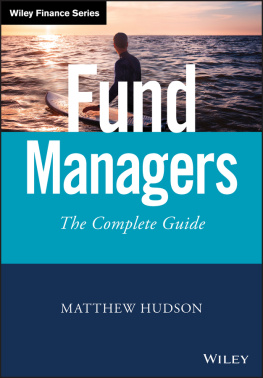WealthTech: Wealth and Asset Management in the FinTech Age
WealthTech: Wealth and Asset Management in the FinTech Age
Edited by
Patrick Schueffel
INFORMATION AGE PUBLISHING, INC.
Charlotte, NC www.infoagepub.com
Copyright 2020 Information Age Publishing Inc.
All rights reserved. No part of this publication may be reproduced, stored in a retrieval system, or transmitted, in any form or by any means, electronic, mechanical, photocopying, microfilming, recording or otherwise, without written permission from the publisher.
Printed in the United States of America
Library of Congress Cataloging-In-Publication Data
The CIP data for this book can be found on the Library of Congress website (loc.gov).
Paperback: 978-1-64113-848-2
Hardcover: 978-1-64113-849-9
eBook: 978-1-64113-850-5
Contents
Prefaceix
Patrick Schueffel
PART 1
Introduction
. Digitizing Wealth Management:
Marc P. Bernegger
. Is FinTech a Red Herring?7
J. P. Caldeira
. FinTech: The Genie Will Not Turn Back to His Bottle9
Raphael Cretinon and Jean Bonnefoy
PART 2
Technological trends affecting
wealth & asset management
.
Nicolas Buerkler and Helena Steiner
. WealthTechThe Brave New World?23
Alexander Tomenendal
. The Pitfalls of Investing 4.035
Hendrik Emrich
PART 3
Societal Trends Affecting
Wealth & Asset Management
. Democratization of Banking Services in Emerging Markets: Mexico41
Felix Cardenas and Maurizio Ballesteros
. Why Bitcoin Is Not a Currency but a
Speculative Real Asset47
Dietmar Peetz and Gregory Mall
. Millennials: The New Generation of
Wealth Management Clients57
David Gyori
PART 4
IT Management, Data Privacy and
Regulatory Implications
. The Regulation of Robo-Advisors65
Richard B. Levin, Peter F. Waltz, and Robert W. Wenner
. Regulating WealthTech and Robo-Advise in the EU73
Ulf Klebeck
. Protection of Privacy from Conception or Privacy by Design83
Nicolas Steiner
PART 5
Financial Risk and Performance Measurement
. How Can Robo-Advisors Help to
Enhance Investment Returns?89
Claus Huber
. Performance Watcher95
Nicholas Hochstadter
Part 6
The competitive landscape
. Cross Border Set Up of Crowdlending
Investment Funds101
Torsten Ries
. The Landscape of Robo-Advisor Operators
in the DACH Region109
Maryna Tykholoz-Cukov
. Doomed like Dinosaurs115
Patrick Schueffel
PART 7
The Wider Value Chain
. A Network of Experts is the Future of Asset Management121
Anna Schmid
. Decrypting the WealthTech Mindset127
Richard-Marc Lacasse and Berthe Lambert
. Cryptoasset Portfolios:
Floyd DCosta
PART 8
Product development and innovation
. How WealthTech is Re-Inventing the Customer Experience by Linking Open Innovation and Technology141
Daniel Fasnacht
. Venture Capital and Banks Investing in
Startups via Corporate Venture Capital147
Maurizio Ballesteros and Felix Cardenas
PART 9
Marketing and Sales
. Digital Family Office 2.0153
Steffen Bassler
. Strategizing about Robo-Advise157
Claude Diderich
PART 10
The Human Side of WealthTech
. Age of Discovery:
Dimitrios Salampasis, Anne-Laure Mention, and Alexander Kaiser
. A Call for More Case Studies on FinTech Innovation175
Wolfgang Amann
About the Authors183
v
vi CONTENTS
Preface
Patrick Schueffel
Digital transformation is creating game-changing opportunities and disruptions across industries and businesses. One industry where these game-changing opportunities will have profound impacts is wealth and asset management. For generations, wealth and asset management was a privileged service provided to co-operations and wealthy individuals. The informational advantages that wealth managers held vis--vis their clients provided a key competitive differentiator. In the current digital transformation climate, this differentiator is vanishing, and the setting is changing. A top priority on the agenda for any wealth and asset manager must therefore be how to respond and prepare for the ramifications of this fast-changing business environment. Thanks to the 25 contributions by 34 thought leaders of the asset and wealth management industry, this book provides the reader with a head-start in adapting to this new digital environment.
This volume is intended as the primary resource for the wealth and asset management technology revolution. It examines the rise of financial technology and its growing impact on the wealth and asset management industry. Written by industry experts in the global WealthTech space, this book offers an analysis of the current tectonic shifts happening in wealth and asset management and aggregates diverse industry expertise into a single informative volume. It examines the rise of financial technology and its growing impact on the wealth and asset management industry and is intended to provide practitioners such as wealth managers, bankers and investors with the answers they need to capitalize on this lucrative market. As a primer on WealthTech it furthermore offers academics clear insight into the repercussions of profoundly changing business models. It additionally highlights the concept of the ongoing democratization of wealth management towards a more efficient and client-centric advisory process, free of entry hurdles.
Aggregating facts, expertise, insights and acumen from many authors, this book strives to answer questions such as: Who are key players in WealthTech? What is fueling its exponential growth? What are the key technologies behind WealthTech? How do regulators respond? What are the risks? What is the reaction of incumbent players?
The wealth and asset management industry is facing a number of significant challenges: macro-economic pressures, market environment volatility, increasing and tighter regulations, rising cost structures, changes in client behavior and a changing client landscape, and, new entrants to the market. Wealth and asset managers must adjust to the new realities. Further complicating these challenges are new technical developments entering the industry.
The digitalization of the financial industry is displaying disruptive features which will have major implications for the entire wealth and asset management sector. Two facets of this disruption are particularly interesting: first, the qualitative changes of the wealth and asset management service (Will a Robo-advisor provide better advise than a human? What about the trust component?) and secondly, qualitative changes in the wealth and asset management industry (Can more people now receive wealth management services than before? Can asset management be provided more cost-efficiently?).
I sincerely believe that FinTech marks the beginning of a new era for the wealth and asset management industry. New technological trends in wealth and asset management, are shaking up the industry. In fact, on its own account WealthTech can now be defined as a new domain within the financial industry that applies technology to improve wealth management and private banking. Currently, the effects of these developments and their ramifications are unclear, and the path ahead is even less visible. This book will aim to fill the current knowledge gap in this area by addressing both of these elements. It is structured along the following 10 parts:
- Introduction
A tour dhorizon on FinTech and its impact on asset and wealth management will be provided along with a few critical remarks in this first chapter
Next page








